4 Reasons CFOs Need Business Unit Cash Flow Visibility


CFOs face a persistent challenge: treasury teams provide excellent bank account visibility, but when executives ask which divisions are underperforming or which regions pose strategic risks, there are no answers.
Bank account-based cash flow forecasting creates blind spots that prevent CFOs from making informed strategic decisions. Business unit cash flow visibility can solve this problem by organizing forecasts around operational structures rather than banking architecture.
Forward-thinking CFOs are making this transition now.
1. Executive Decision-Making Requires Operational Context
Bank account forecasts tell CFOs how much cash exists in each account. What they can't do is identify which business units generate strong cash flows or which divisions consistently underperform.
During budget reviews and board presentations, executives need to understand performance at the operational level. They ask specific questions:
- Which product lines are driving cash shortfalls?
- Which regions should receive additional investment?
- Why did we miss our cash flow targets this quarter?
Instead of coming to the board with no answers, focusing on business unit visibility and forecasting provides the operational context that turns cash flow data into actionable intelligence.
According to McKinsey & Company, the CFO mandate has expanded significantly, requiring finance leaders to provide deeper operational insights and strategic guidance beyond just financial reporting.
2. Regional Risk Management and Geographic Visibility
Global organizations face country-specific risks that remain invisible when cash flows aggregate by bank account.
For example, regulatory changes in Europe, payment term extensions in Asia, or seasonal variations across markets get masked in consolidated bank reporting. CFOs learn about regional market disruptions only after they impact overall cash positions.
Consider this scenario: A major customer extends payment terms due to local regulations. This pattern might not surface until it spreads company-wide, but by then, you've missed months of opportunity to adjust credit terms, implement alternative financing, or reallocate working capital.
Business unit and regional forecasting structures uncover these issues immediately. You manage risks proactively instead of explaining to investors why cash flows missed expectations.
GTreasury's multi-location forecasting capabilities ensure organizations can identify regional risks before they impact overall performance.
3. Working Capital Optimization Needs Business Unit Granularity
CFOs cannot identify which divisions tie up excessive working capital or which regions generate superior cash conversion without business unit visibility.
When investors or board members ask about working capital optimization initiatives, bank account forecasts lack the granularity needed to demonstrate focused improvement efforts.
Here's what gets hidden in bank account aggregation:
- A retail division might have excellent inventory turns
- A B2B division struggles with days sales outstanding
- One region consistently outperforms on cash conversion
These patterns disappear when cash flows aggregate by account; business unit visibility enables targeted working capital improvements that drive measurable results.
The Association for Financial Professionals emphasizes that effective cash forecasting requires alignment with business operations to drive working capital optimization.
4. Strategic Initiatives Require Cash Flow Modeling by Division
When executives evaluate potential acquisitions, market expansion, or product line investments, CFOs need to model how these strategic moves would impact cash flows.
Bank account structures cannot support this analysis.
A software company evaluating an acquisition needs to demonstrate that their SaaS division's predictable recurring revenue can support debt service while their professional services division provides additional upside.
Without business unit visibility, CFOs can’t provide this level of analysis. Strategic decision support requires the ability to model cash flows at the operational level where business actually happens.
GSmart Ledger's AI-powered analytics provide the business unit-level insights that encourage strategic decision-making support.
Gain A Competitive Edge
Organizations that rely exclusively on bank account-based approaches find themselves operationally reactive rather than strategically proactive. They manage today's cash position but struggle to optimize tomorrow's cash generation.
The competitive gap is widening. While you're explaining bank account balances, competitors are optimizing business unit cash generation, making faster strategic decisions, and gaining market advantages through superior cash flow intelligence.
The most effective treasury organizations employ both approaches:
- Bank account forecasting for operational liquidity management
- Business unit forecasting for strategic cash optimization
As treasury's role continues to evolve toward strategic business partnership, the ability to forecast by business unit and region has become the differentiating capability. This is what separates tactical operations from strategic leadership.
Schedule a demo with our team of treasury experts and get automated cash flow forecasting in 90 days.
4 Reasons CFOs Need Business Unit Cash Flow Visibility
CFOs face a persistent challenge: treasury teams provide excellent bank account visibility, but when executives ask which divisions are underperforming or which regions pose strategic risks, there are no answers.
Bank account-based cash flow forecasting creates blind spots that prevent CFOs from making informed strategic decisions. Business unit cash flow visibility can solve this problem by organizing forecasts around operational structures rather than banking architecture.
Forward-thinking CFOs are making this transition now.
1. Executive Decision-Making Requires Operational Context
Bank account forecasts tell CFOs how much cash exists in each account. What they can't do is identify which business units generate strong cash flows or which divisions consistently underperform.
During budget reviews and board presentations, executives need to understand performance at the operational level. They ask specific questions:
- Which product lines are driving cash shortfalls?
- Which regions should receive additional investment?
- Why did we miss our cash flow targets this quarter?
Instead of coming to the board with no answers, focusing on business unit visibility and forecasting provides the operational context that turns cash flow data into actionable intelligence.
According to McKinsey & Company, the CFO mandate has expanded significantly, requiring finance leaders to provide deeper operational insights and strategic guidance beyond just financial reporting.
2. Regional Risk Management and Geographic Visibility
Global organizations face country-specific risks that remain invisible when cash flows aggregate by bank account.
For example, regulatory changes in Europe, payment term extensions in Asia, or seasonal variations across markets get masked in consolidated bank reporting. CFOs learn about regional market disruptions only after they impact overall cash positions.
Consider this scenario: A major customer extends payment terms due to local regulations. This pattern might not surface until it spreads company-wide, but by then, you've missed months of opportunity to adjust credit terms, implement alternative financing, or reallocate working capital.
Business unit and regional forecasting structures uncover these issues immediately. You manage risks proactively instead of explaining to investors why cash flows missed expectations.
GTreasury's multi-location forecasting capabilities ensure organizations can identify regional risks before they impact overall performance.
3. Working Capital Optimization Needs Business Unit Granularity
CFOs cannot identify which divisions tie up excessive working capital or which regions generate superior cash conversion without business unit visibility.
When investors or board members ask about working capital optimization initiatives, bank account forecasts lack the granularity needed to demonstrate focused improvement efforts.
Here's what gets hidden in bank account aggregation:
- A retail division might have excellent inventory turns
- A B2B division struggles with days sales outstanding
- One region consistently outperforms on cash conversion
These patterns disappear when cash flows aggregate by account; business unit visibility enables targeted working capital improvements that drive measurable results.
The Association for Financial Professionals emphasizes that effective cash forecasting requires alignment with business operations to drive working capital optimization.
4. Strategic Initiatives Require Cash Flow Modeling by Division
When executives evaluate potential acquisitions, market expansion, or product line investments, CFOs need to model how these strategic moves would impact cash flows.
Bank account structures cannot support this analysis.
A software company evaluating an acquisition needs to demonstrate that their SaaS division's predictable recurring revenue can support debt service while their professional services division provides additional upside.
Without business unit visibility, CFOs can’t provide this level of analysis. Strategic decision support requires the ability to model cash flows at the operational level where business actually happens.
GSmart Ledger's AI-powered analytics provide the business unit-level insights that encourage strategic decision-making support.
Gain A Competitive Edge
Organizations that rely exclusively on bank account-based approaches find themselves operationally reactive rather than strategically proactive. They manage today's cash position but struggle to optimize tomorrow's cash generation.
The competitive gap is widening. While you're explaining bank account balances, competitors are optimizing business unit cash generation, making faster strategic decisions, and gaining market advantages through superior cash flow intelligence.
The most effective treasury organizations employ both approaches:
- Bank account forecasting for operational liquidity management
- Business unit forecasting for strategic cash optimization
As treasury's role continues to evolve toward strategic business partnership, the ability to forecast by business unit and region has become the differentiating capability. This is what separates tactical operations from strategic leadership.
Schedule a demo with our team of treasury experts and get automated cash flow forecasting in 90 days.

Ver Tesorería en acción
Conéctese hoy mismo con expertos de apoyo, soluciones integrales y posibilidades sin explotar.































.jpg)
.png)


























.png)




.jpeg)

.jpeg)










.jpeg)


.jpeg)







.jpeg)


.jpeg)









.jpeg)
















.jpg)

.png)


